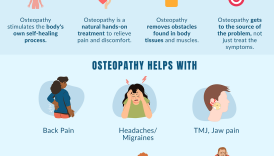Stay Fit and Happy with These Easy Healthy Living Hacks

Importance of Healthy Living
Healthy living encompasses more than just a balanced diet or regular workouts; it’s a comprehensive approach to enhancing one’s overall well-being. In today’s fast-paced world, it’s easy to neglect personal health amidst busy schedules. However, prioritizing a healthy lifestyle can act as a foundation for both physical and mental wellness. Consider Jane, a full-time professional who recently decided to overhaul her daily routine. She noticed that her energy levels were dwindling, and stress was dramatically affecting her mood. By embracing healthy living, including mindful eating and exercise, Jane significantly improved her quality of life. The key reasons to focus on healthy living include:
- Stay Fit and Happy with These Easy Healthy Living Hacks
- Importance of Healthy Living
- Benefits of Stay Fit and Happy
- Healthy Eating Habits
- Balanced Diet
- Meal Planning
- Regular Exercise Routine
- Cardio Workouts
- Strength Training
- Mental Health Practices
- Stress Management
- Mindfulness Techniques
- Quality Sleep Patterns
- Importance of Sleep
- Tips for a Good Night's Sleep
- Disease Prevention: A nutritious diet and regular physical activity can decrease the risk of chronic illnesses such as diabetes, heart disease, and obesity.
- Enhanced Mood: Engaging in physical activities releases endorphins, which are natural mood lifters, preventing emotional dips and fostering a positive mindset.
- Increased Longevity: Healthy habits can lead to a longer lifespan, allowing individuals more time to spend with loved ones and pursue passions.
Benefits of Stay Fit and Happy
Maintaining fitness is integral to living a joyful and fulfilling life. The benefits extend beyond just looking good; they influence how individuals feel both mentally and physically. Embracing a fit lifestyle can lead to:
- Improved Self-Confidence: Regular exercise helps individuals feel good in their skin, resulting in a boost in self-esteem.
- Better Mental Clarity: Physical fitness often improves cognitive functions, leading to sharper focus and enhanced productivity.
- Strong Social Connections: Engaging in fitness activities can also foster connections with like-minded individuals, improving one’s social life.
Each small step counts. Whether it’s taking a brisk walk during lunch breaks, joining a local gym, or trying a new healthy recipe, these contributions culminate in a healthier, happier individual. Healthy living is not just about making changes but about creating a fulfilling lifestyle that enhances every aspect of life.
Healthy Eating Habits
Balanced Diet
Transitioning from a focus on mental and physical health, one of the most critical components of healthy living is adopting a balanced diet. A balanced diet provides essential nutrients that the body needs to function optimally. Simply put, it means incorporating a variety of food groups to ensure that one is receiving carbohydrates, proteins, fats, vitamins, and minerals. Emily, a fitness enthusiast, learned the hard way that depriving herself of certain food groups wasn’t the best approach. Upon consulting a nutritionist, she discovered the power of balance. Now, her meals include:
- Fruits and Vegetables: Ideally half her plate, these power foods are rich in vitamins, minerals, and fibers.
- Whole Grains: Foods like oats, brown rice, and quinoa help in maintaining energy and digestion.
- Lean Proteins: Incorporating sources like chicken, fish, legumes, and nuts supports muscle repair and growth.
- Healthy Fats: Avocados, olive oil, and nuts provide essential fatty acids necessary for brain health.
This balanced approach not only boosts Emily’s energy but also keeps her satisfied and nourished throughout the day.
Meal Planning
Equally important to healthy eating is the art of meal planning. Taking the time to plan meals can prevent impulsive eating and help you stick to a balanced diet. For many, planning appears daunting, but breaking it down can simplify the process. Here are some steps to effective meal planning:
- Choose a Day: Pick a day of the week to plan your meals. Sunday is popular for many.
- Create a Menu: Outline meals for breakfast, lunch, and dinner. Don’t forget to include healthy snacks!
- Make a Shopping List: Based on your menu, jot down the ingredients you’ll need.
- Prep in Advance: Dedicate a couple of hours to chop, cook, or marinate foods that can be stored for the week.
- Be Flexible: Life happens! Have a few backup meal options or frozen meals ready just in case.
Emily found that with her meal planning, she wasted less food, saved money, and enjoyed cooking more. By being intentional about what she consumes, she not only supports her fitness goals but also cultivates a healthy relationship with food. Embracing a balanced diet paired with effective meal planning lays a strong foundation for lasting health and happiness.
Regular Exercise Routine
Cardio Workouts
Having established the importance of healthy eating, the next crucial component of a healthy lifestyle is regular exercise. A well-rounded fitness routine typically includes two essential elements: cardio workouts and strength training. Each component plays a vital role in enhancing overall health and well-being. Cardio workouts, often regarded as the cornerstone of fitness, focus on elevating the heart rate to improve cardiovascular health. Activities like running, cycling, brisk walking, or even dancing can be effective. For example, Tom, an outdoor enthusiast, found his passion in hiking. Not only does it offer a great cardiovascular workout, but it also reconnects him with nature, making exercise enjoyable. Benefits of incorporating cardio workouts include:
- Improved Heart Health: Regular cardio strengthens the heart muscle and helps maintain healthy blood pressure levels.
- Weight Management: Cardio burns calories efficiently, aiding in weight loss or maintaining a healthy weight.
- Enhanced Mood: The release of endorphins during cardio leads to what many call the “runner’s high,” helping combat stress and anxiety.
Strength Training
Alongside cardio, strength training is another critical aspect of a balanced exercise routine. While some may believe that lifting weights is only for bodybuilders, it’s essential for everyone, as it builds muscle mass and boosts metabolism. Lisa, a busy mom, integrated strength training into her routine and was pleasantly surprised by its impact. Just a few sessions each week not only helped her gain strength but also increased her energy levels throughout her day. Some key benefits of strength training include:
- Increased Muscle Mass: Building muscle can improve overall strength and functionality for daily activities.
- Metabolic Boost: More muscle means a higher resting metabolic rate, which helps burn more calories even at rest.
- Bone Health: Resistance training can enhance bone density and reduce the risk of osteoporosis later in life.
To create a balanced routine, mixing cardio and strength training throughout the week is essential—aim for at least 150 minutes of moderate-intensity cardio and two or more strength training sessions per week. By prioritizing both aspects, individuals can enjoy a comprehensive fitness journey that supports heart health, muscle strength, and overall happiness. Embracing these routines fosters not just physical improvements but also a fulfilling lifestyle that contributes richly to mental and emotional well-being.
Mental Health Practices
Stress Management
As we delve further into a holistic approach to healthy living, it’s imperative to recognize the significance of mental health practices. Just as physical exercise strengthens the body, mental wellness strategies fortify the mind, helping individuals navigate the challenges of daily life. One of the most vital aspects of mental health is effective stress management. Consider Daniel, a marketing executive battling the pressures of deadlines and high expectations. He realized that unchecked stress was impacting his productivity and well-being. By implementing stress management techniques, he reclaimed control over his life. Here are some effective strategies that have worked for Daniel and many others:
- Time Management: Organizing tasks in a planner and setting realistic deadlines can help reduce feelings of overwhelm.
- Regular Breaks: Taking short breaks throughout the workday allows the mind to recharge. Techniques like the Pomodoro Technique—working in bursts of 25 minutes followed by a 5-minute break—can be particularly effective.
- Physical Activity: Engaging in physical exercise can act as a natural stress reliever by releasing endorphins. Even a simple walk can clear the mind and improve mood.
- Social Connections: Talking with friends or family can provide emotional support and perspective, alleviating feelings of isolation.
Mindfulness Techniques
In conjunction with stress management, mindfulness techniques offer powerful tools for enhancing mental wellness. By concentrating on the present moment, individuals can cultivate a deeper awareness of their thoughts and emotions. Sarah, a yoga instructor, found that integrating mindfulness into her life transformed her approach to stress and anxiety. Here are some mindfulness practices worth trying:
- Meditation: Even five to ten minutes of focused breathing each day can reduce anxiety and increase feelings of calm. Apps like Headspace or Calm can guide beginners through the process.
- Gratitude Journaling: Taking time to jot down what one is grateful for each day can shift focus away from stressors. This practice fosters positivity and encourages appreciation for life’s simple joys.
- Mindful Eating: Paying attention to the sensory experience of eating—such as flavors, textures, and aromas—can enhance satisfaction and help regulate food intake.
- Nature Walks: Spending time in nature, away from the hustle and bustle, allows for a mindful appreciation of surroundings, benefitting both mental clarity and emotional health.
By incorporating stress management and mindfulness techniques into daily routines, individuals can take proactive steps toward mental wellness. These practices not only reduce anxiety but also pave the way for a more fulfilling and balanced life, complementing the physical health benefits gained through regular exercise and healthy eating. Together, they create a comprehensive framework for overall well-being, nourishing not just the body, but the mind and spirit as well.
Quality Sleep Patterns
Importance of Sleep
As we explore the final factors contributing to a holistic approach to healthy living, it is vital to recognize the fundamental role of quality sleep. Often overlooked in the hustle of daily life, sleep is not merely a time of rest; it is a dynamic phase of rejuvenation crucial for physical and mental health. For instance, Mike, a college student juggling classes and part-time work, often found himself sacrificing sleep to meet demands. He soon realized that his grades slipped and he felt more irritable. Upon prioritizing sleep, he noticed significant changes: better focus, improved mood, and enhanced memory. Research has shown that adequate sleep benefits individuals in various ways:
- Cognitive Function: Arguably one of the most crucial effects of sleep is its impact on brain performance. It enhances problem-solving skills and creativity.
- Physical Health: Quality sleep aids in muscle repair, supports the immune system, and maintains hormonal balance, all vital for overall health.
- Emotional Stability: Sleep impacts mood regulation. A lack of sleep can lead to increased irritability and vulnerability to stress.
Tips for a Good Night’s Sleep
With an understanding of the importance of sleep, the next step is to cultivate habits that promote quality rest. Implementing effective sleep practices can transform nighttime from a challenge into a restorative experience. Here are several practical tips for achieving a good night’s sleep:
- Establish a Sleep Schedule: Going to bed and waking up at the same time daily regulates the body’s internal clock, promoting better sleep.
- Create a Relaxing Bedtime Routine: Engage in calming activities before bed—such as reading, taking a warm bath, or practicing gentle yoga—to signal to the body that it’s time to wind down.
- Limit Screen Time: Reducing exposure to blue light from phones, tablets, and computers at least an hour before bed can enhance melatonin production, improving sleep quality.
- Optimize the Sleep Environment: Ensure a cool, dark, and quiet bedroom. Investing in a comfortable mattress and pillows can make a substantial difference.
- Mind Your Diet: Be cautious about heavy meals, caffeine, and alcohol close to bedtime. All can disrupt sleep patterns.
By embracing these sleep strategies, individuals can greatly improve their sleep quality, contributing to better physical health, enhanced mental clarity, and overall well-being. Quality sleep, combined with a balanced lifestyle of healthy eating, regular exercise, and mindfulness practices, creates a robust framework for living a fulfilling and vibrant life. Prioritizing sleep means embracing a form of self-care that benefits not just the individual, but all aspects of their life.





